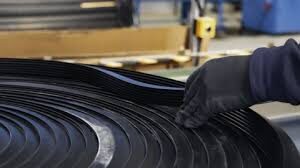Guide of Rubber Curing
Curing is also known as vulcanization. Curing treatment of rubber process includes giving rubber special qualities like strength, elasticity, and moveability. In scientific terms, it refers to the formation of cross-linking connecting polymer chains of the rubber molecules. By this Cross-linking we can stop the chain from moving independently and unwantedly, this lets the material stretch under stress and then return to its original shape when stress is released.

Different methods of Rubber Curing
There are a lot of methods of curing rubber in this industry. Let’s discuss deeply:
Sulfur based rubber curing: In this method, Sulphur or Insoluble sulfur is used along with accelerators during the final stage of mixing compounds. Loading sulfur above the level 1.5 PHR can lead to sulfur blooming when the compound is stored over a longer period of time, hence Insoluble sulfur is most of the time recommended.
Sulfur less rubber curing: In this method, other chemicals are used to cross-link polymers like Monochloride, Tellurium, Selenium, Thiuram Accelerator, Polysulphide polymers, p-Quinone Dioxime S, Metallic Oxides, Organic Peroxides, Di-isocyanates etc.
Sulfur is the most successful and economical cross-linking agent even today.

